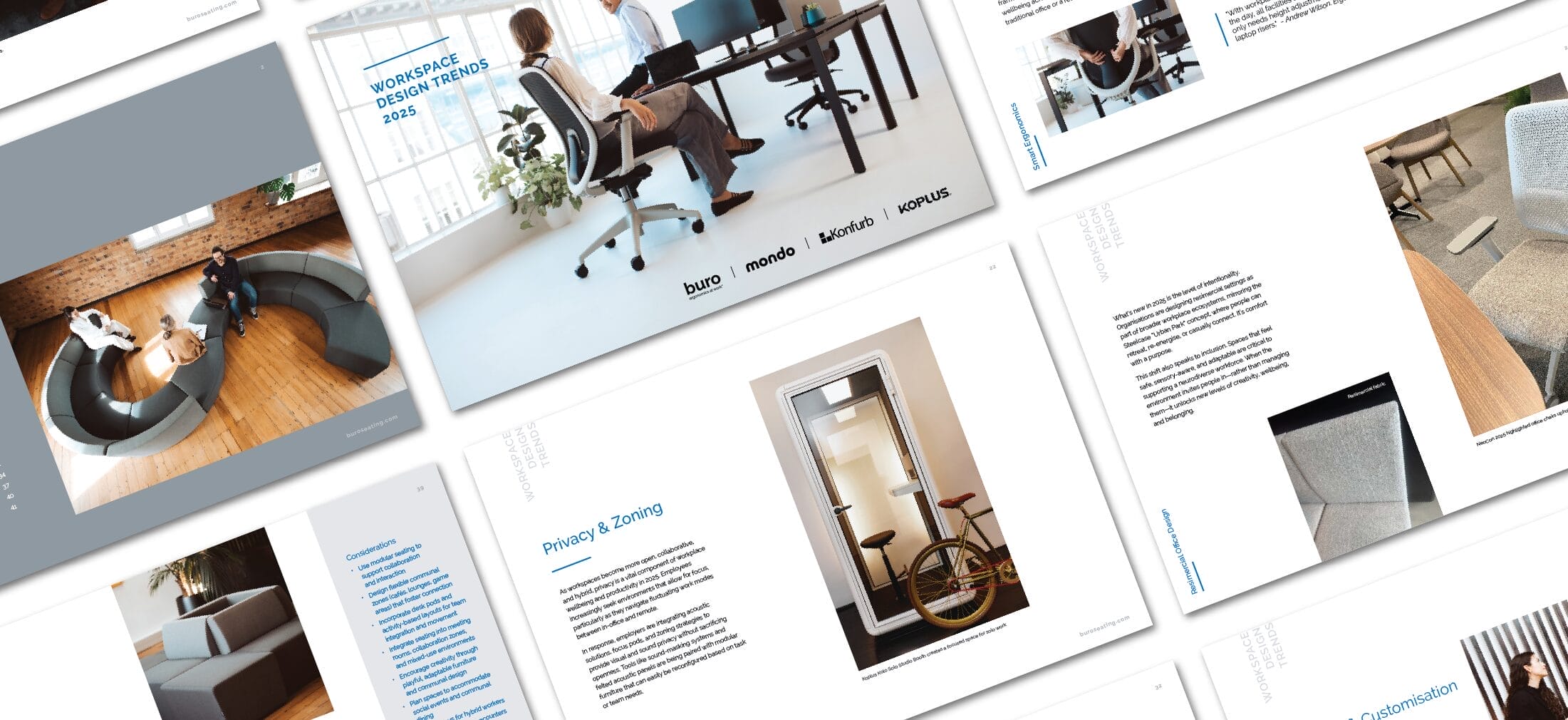Buro celebrates its 30th birthday this month, marking three full decades in the business of designing ergonomic office furniture. A lot has changed in the workplace over the past thirty years, from our office attire to the way we work and the technology we use.
In this blog, we’ll take a trip back in time to explore how office design and ergonomics have evolved, from the rigid rows of desks and fax machines of the 1990s to the hybrid, technology-driven workplaces of today.
The 1990s: traditional workspaces and early ergonomics
Office design in the 1990s was a world apart from today’s open plan environments, with a greater focus on individual workspaces for staff. Workplaces often featured rows of static desks made from oak, rimu or melamine.
While office chairs in the 90s had simple swivel and tilt mechanisms, advanced ergonomic features were rare, with few seating designs offering advanced lever mechanisms to tailor comfort and safety.
“There was way less emphasis on ergonomics,” says Buro’s founder David Boyd. ”Gas lift chairs had just arrived — previously, you had to adjust the height of a chair by spinning it around in the shaft. There was no swinging and spinning around in chairs because you wouldn’t want it to go up and down!”
Technology was far less advanced, with super slow fax machines, dial-up internet and printers that took all day to work. Computers were “huge”, David says, while adjustable keyboards and mobile phones were becoming more common.
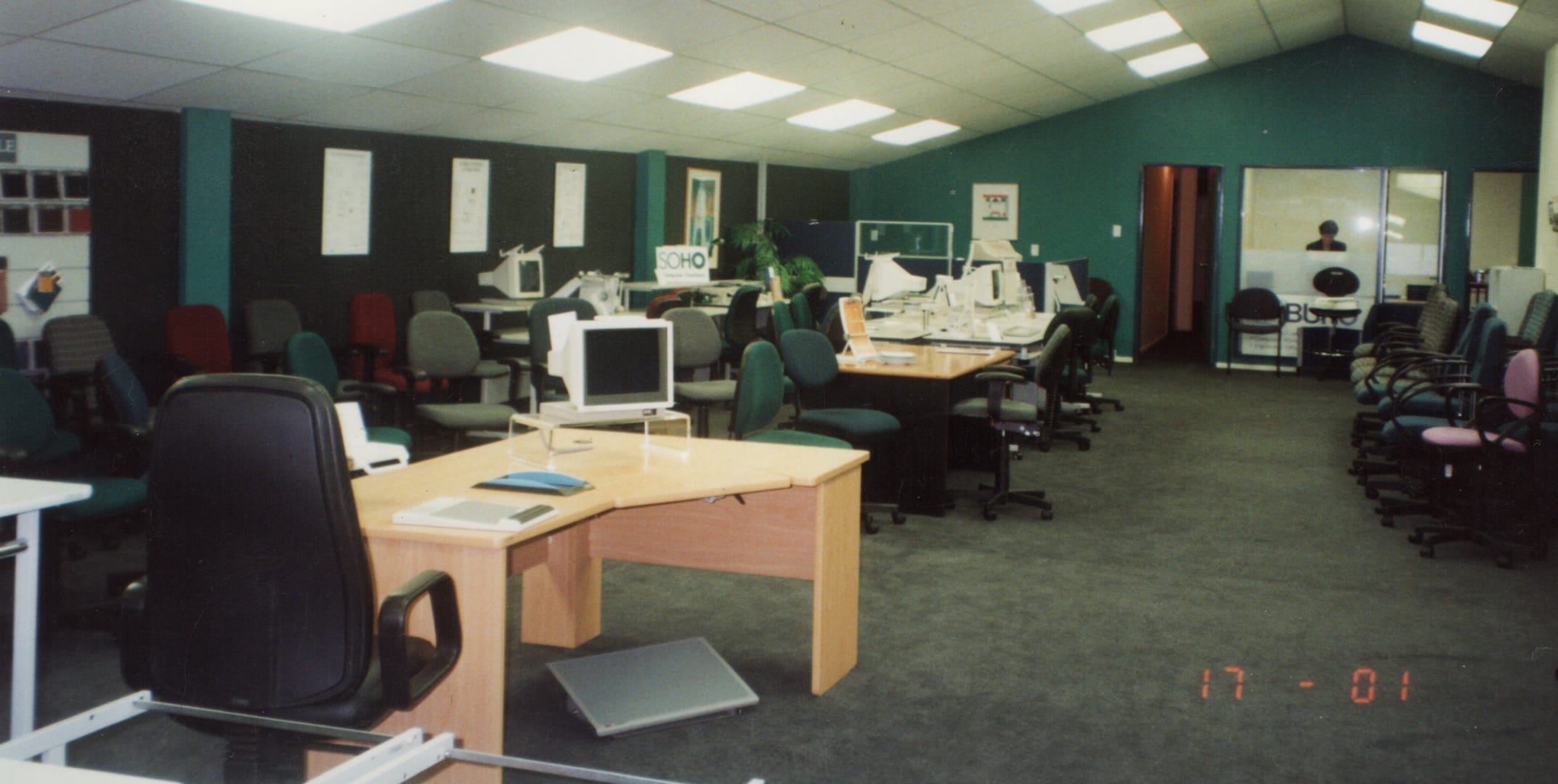
Left: Buro showroom 1995-1996.
Right: Buro office furniture featured in a brochure.
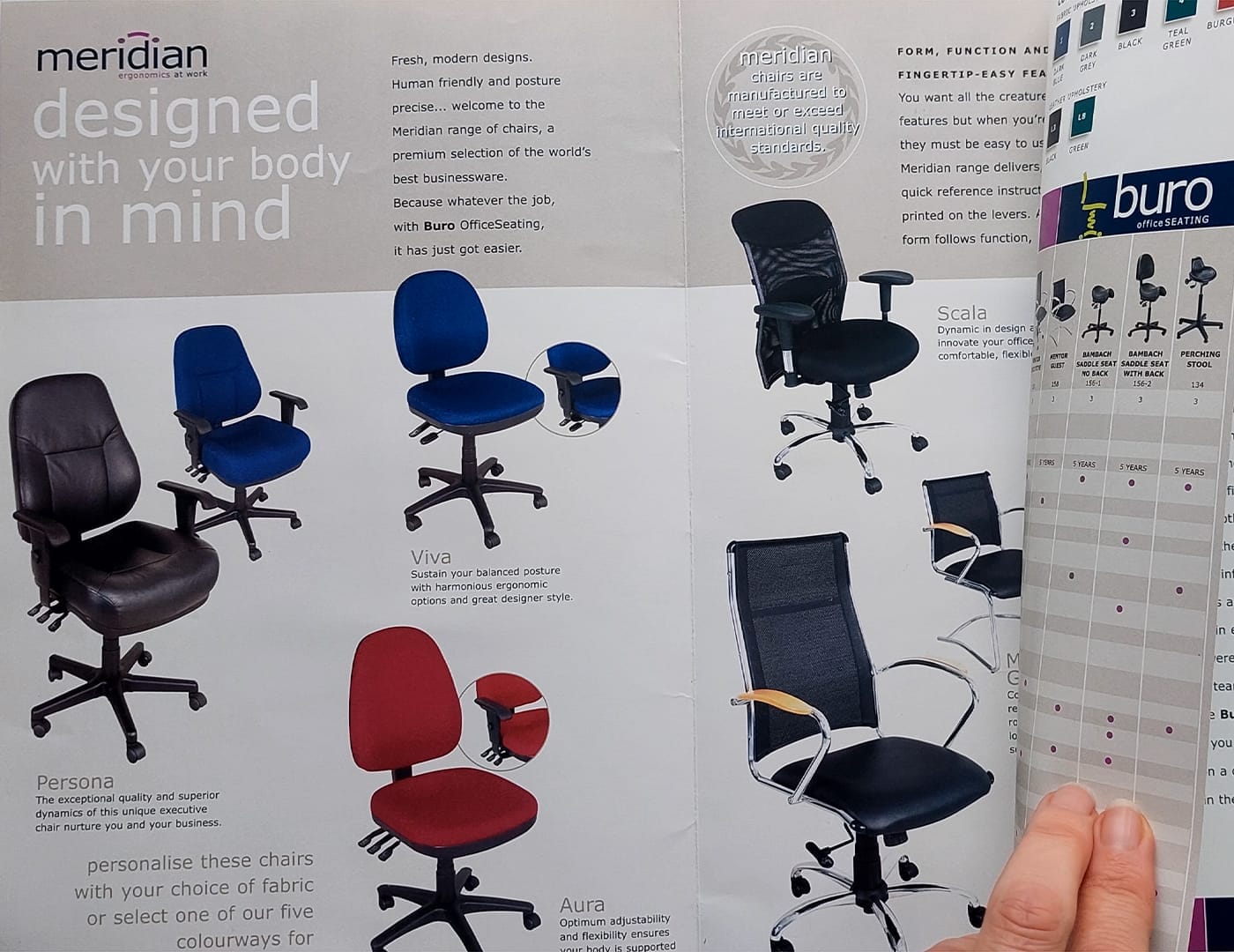
When Buro entered the office furniture market in 1994, we persevered for years to be recognised as a top wholesaler of ergonomic seating, eventually winning support from key influencers in the market after forming a partnership with a leading chair supplier.
This led to the launch of the Buro Persona chair in 1995, the design becoming an integral part of our lineup, which is still sold today.
The Buro Persona was unique for its time, offering multifunctional ergonomic adjustments. It quickly became known as a strong, durable and comfortable office option.
“In the early 1990s, chairs weren’t designed with ergonomics in mind. They weren’t tailored for changing posture or promoting a healthy, safe, work environment,” says Chris Phillips, our former product development manager. “The Buro Persona came from an internationally prominent factory in Taiwan. It offered the market something unique; it was strong, durable, and ergonomic.”
Built to withstand the rigours of multi-user/multi-shift work environments, the Buro Persona is ideal for a wide variety of ‘around the clock workplace settings’ such as Hospitals, Airports, Emergency Departments, Call Centres, Security Guard Stations, Control Rooms and multi-shift assembly operations.
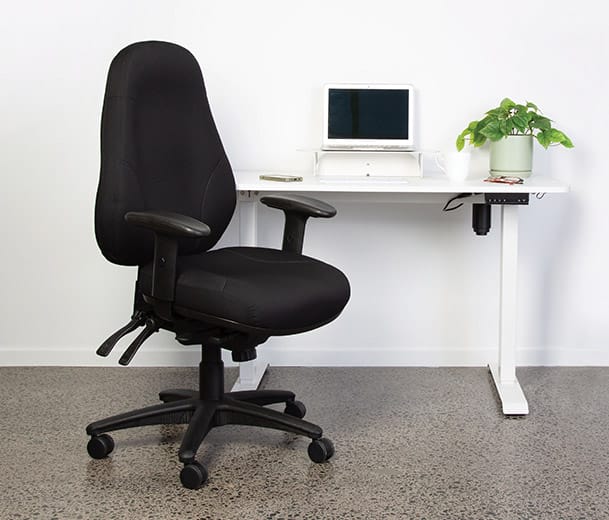
How things have changed in office design
Fortunately for employees, workplace ergonomics and office design have improved beyond recognition since the launch of the first multifunctional chairs in the mid 90s.
“Ergonomics in the office has taken on a whole new meaning,” says Buro General Manager Tim Howard, who has been with the team for more than two decades.
Three-lever chairs remain a classic office option, but employers now have access to a range of new ergonomic designs to suit different needs, such as synchro mechanism chairs that respond intuitively to body movement without the need for levers.
“Twenty years ago, we were talking about a three-lever task chair that had ergonomic properties. Today, we talk about something like our Buro Mentor chair, which has Dynamic Intelligence™, but incorporates everything we’re looking for in ergonomics,” Tim adds.
The Buro Mentor’s Dynamic Intelligence™ Technology intuitively responds to your weight and organic movement, supporting optimal posture and active sitting.

Apart from the brick-sized mobile phones, slow internet and office fashion, how else have workplaces changed since the 1990s?
Tim says technology has enabled workplaces to become more dynamic and flexible, allowing them to embrace remote and group work. These changes require a range of furniture to meet different needs, such as Konfurb Arco modular seating for collaborative spaces and the mesh-backed Buro Elan ergonomic task chair for focused work.
“We now have the modern or hybrid office, which is quickly reconfigurable to suit different tasks during your day,” he adds. “You need to be able to create ergonomic environments in all of those spaces.”
“So, the concept of ergonomics and office design is very different from 20 years ago,” Tim says.
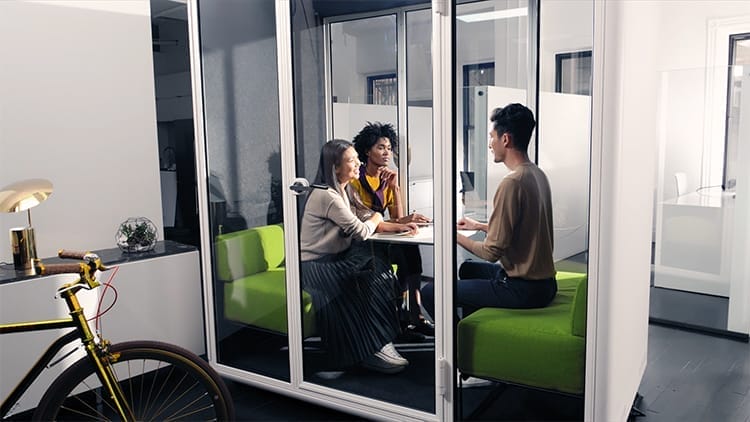
Left: Koplus Kolo Duo Meeting Booth.
Right: Buro Auckland office two-person pod desk arrangement.
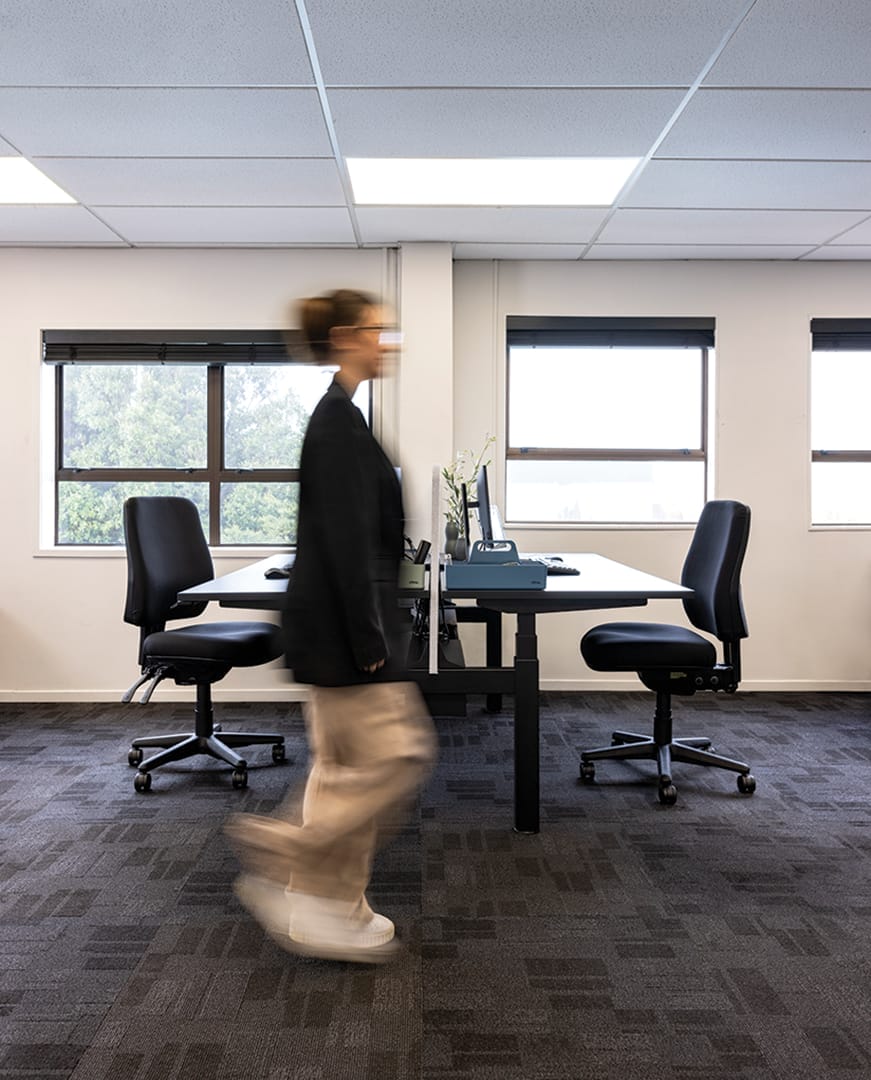
The future of the workplace
With 30 years behind us, what does the next 30 hold?
While some fashion trends return after decades, office design trends are always moving forward. According to our experts, the traditional office of the 90s is a relic of the past.
Due to the rise of remote working, employers are expected to favour smaller office spaces that are multifunctional for desk work, collaboration and video calling.
Tim says: “We will see smaller [office] spaces. If you talk to commercial real estate companies, they all say businesses are taking smaller leases. But they’re looking for a more dynamic space. Spaces that are easily reconfigurable and can become task specific, dedicated to whatever’s happening in the business that day.”
“Buro will need to stay abreast of these office design changes,” Tim says. “Last year, we launched a range of acoustic pods and acoustic booths in recognition of these changes. Later this year, we’ll introduce a new range of collaborative furniture, a shift away from our traditional core business of task chairs, executive chairs, and meeting chairs.”
“So, we’re really moving into a new era of office design for the business,” he adds. “It’s about creating workspaces that are aspirational and where people want to be as well.”
Koplus Kolo Duo meeting booth is a modular design that accommodates up to 4 people or can be extended into Duo+ for 6 people or Duo++ for 8 people. The space can be used as a meeting room, a media room, a focus workstation, or a personal resting space. The office is your oyster.
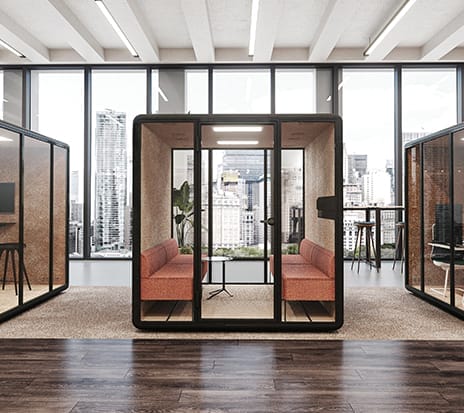
Ready to embrace classic seating design or adopt the latest technology?
Check out our range of ergonomic office chairs and soft seating to find the right fit for your business.


